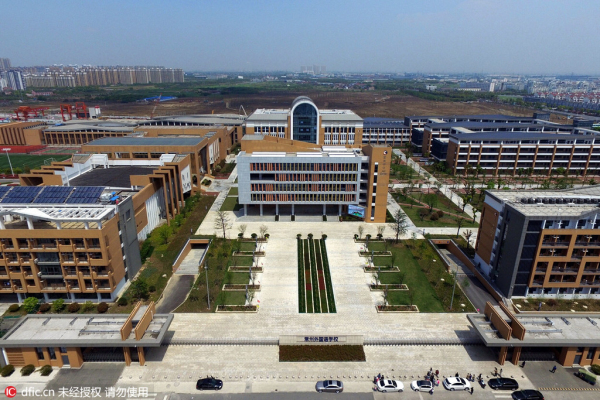 |
|
A view of the new campus of Changzhou Foreign Languages School near a toxic site in Changzhou city, east China's Jiangsu province, 18 April 2016.[Photo/IC] |
The Changzhou scandal, in which over 900 students were diagnosed with health problems after their school moved to a piece of land near where there used to be chemical plants, continues to make headlines. The local authorities have issued a report concluding the school’s water and environmental conditions “meet State standards”. However, the report uses rather vague words and expressions, according to Zhang Tiankan, a former research fellow at the Chinese Academy of Medical Sciences:
An official report is supposed to answer questions, but the one issued by Changzhou officials only raises new ones.
For example, they said that 35 students suffer from “superficial lymphadenectasis, mostly caused by infection”. Many things, such as bacteria, virus, parasites, fungus, mycoplasma, cause infection; without pointing out which is the true cause, the report cannot lead to any valuable conclusion about whether the students’ health problems are the result of contaminated land. Saying the students are “infected” is like saying they are “ill”, which does not pinpoint the cause of the problem.
Besides, the official report contains the conclusion that “the health conditions and drinking water of the school meet State standards”. Can they be any vaguer than that? Take drinking water for example. Currently the State standards include 106 tests, which include the quantity of microorganisms, the concentration of inorganic poisonous chemicals, as well as organic poisonous chemicals.
Only when samples of drinking water meet all the standards, do we say the water meets State standards. The official report does not contain any data about the tests so its conclusion is hardly persuasive.
In particular, it has been claimed that the level of chlorobenzene in the underground water where the school is located is 94,799 times higher than the permitted level. Yet the official report fails to list the concentration of this highly toxic chemical. How can such a report win trust from the public?
More astonishingly, the report is based on materials provided by local officials. Yet such materials might be outdated and their symptoms might change with time. If the local government hopes to restore public trust, instead of creating more panic among the public, they need to be transparent and reveal all the facts.

I’ve lived in China for quite a considerable time including my graduate school years, travelled and worked in a few cities and still choose my destination taking into consideration the density of smog or PM2.5 particulate matter in the region.